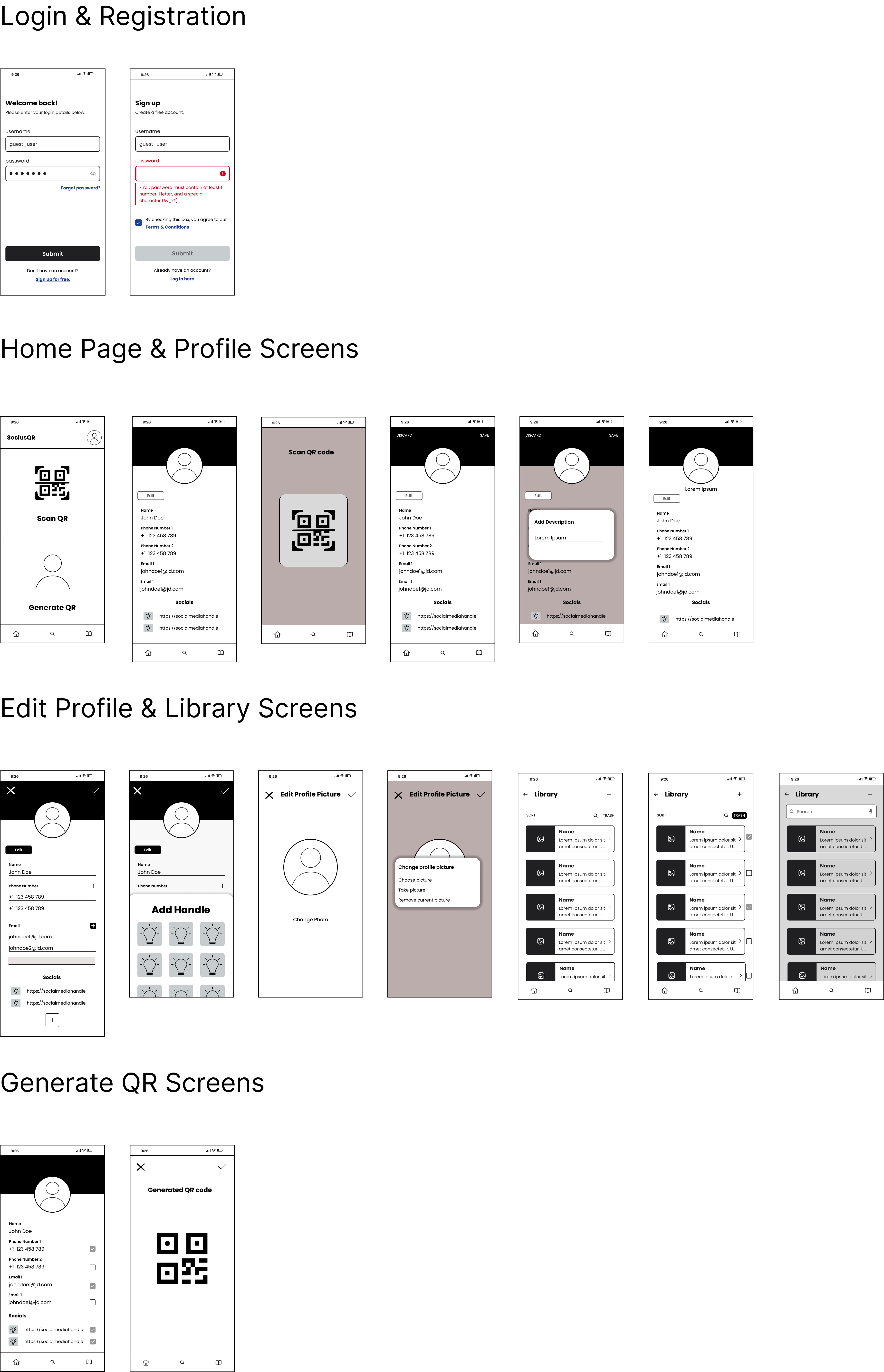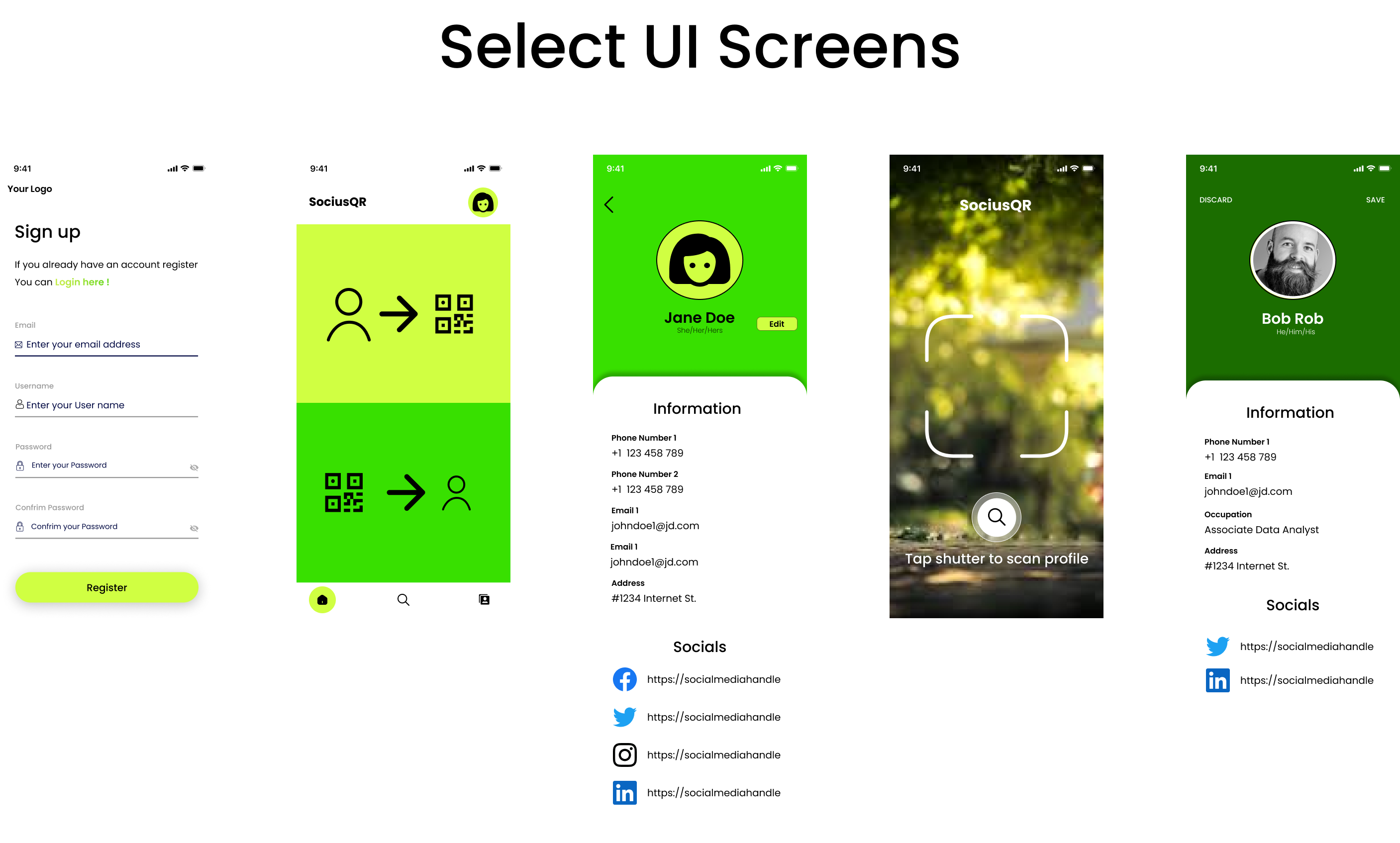SociusQR
Product Design • Web Development • Passion Project
In the midst of the Spring quarter of 2021, when the world was grappling with the challenges posed by the pandemic,
I, like many other kids, was stuck in my dorm idling away. That's when I decided to join a workshop organized by the ACM organization @UCSD that aimed to provide students with hands-on experience
in creating real-world applications. This was the perfect distraction allowing to me to be creative and also learn valuable skills along the way.
I was assigned randomly to work in a team of 4, which eventually became 3, as well as mentor and we were tasked to build a simple MVP mobile application
with a schedule of eight weeks. We all agreed that we wanted to build something that we could use as students and as we were all international
students we shared the troubles of networking in person. That gave us the idea to create a tool that could help students at networking events.
A way to easily share their profile and contact information inlcuding social media handles simply through QR codes!
This case study delves into the process and outcomes of our project, highlighting the challenges we faced, the solutions devised,
and the insights gained along the way.
 (1).png)
.png)
.png)

